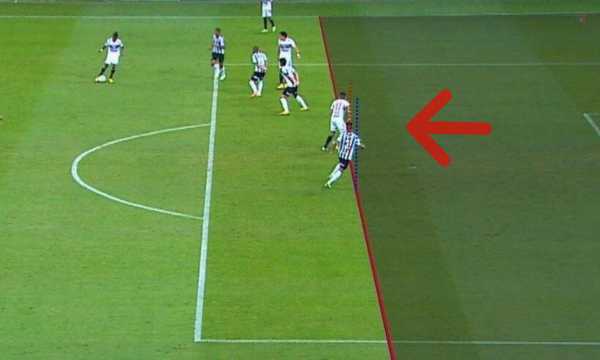Football Rules Explained: Understand the Controversial Plays
Football rules exist to guide the game, but they are not always easy to understand.
Anúncios
Understanding football rules may seem simple… until that controversial play happens.
You’ve probably experienced it: the referee blows the whistle, the game stops, and no one really understands why. And then the debate starts. Was it offside? Handball? Foul?

The truth is many rules are quite clear on paper, but gain different interpretations on the field.
And this happens because football, beyond technique, involves emotion, rhythm, and context.
This guide is not just a technical explanation. It’s an invitation for you to better understand the game, without fuss, with light language and examples that make sense.
Like a conversation with someone who really wants to help you see football with different eyes.
Let’s go through together the most controversial football rules and finally understand what’s behind decisions that change the course of a match.
Get ready to clear your doubts, review concepts, and maybe even surprise that friend who always argues in the chat group. Shall we?
1. Who Defines the Football Rules?
First of all, it is important to know that football rules are not created by the championships or by referees individually.
There is an international organization responsible for this.
- The IFAB (International Football Association Board) is who creates, updates, and publishes the official football rules worldwide.
- It is formed by representatives of FIFA and federations from the United Kingdom, where the sport was born.
Every year, IFAB meets to review what is working and what needs adjustment.
This group defines, for example, the use of technology in football, like the VAR, besides changes in rules such as handball and offside positions.
In other words, no matter how much football evolves, this committee maintains the balance between tradition and innovation.
2. Offside: When the Player Is Really Irregular
Perhaps the most talked-about of the football rules, offside still raises doubts, even among longtime fans.
Simply put, a player is in irregular position if:
- He is closer to the opponent’s goal line than the ball and the second-last defender.
- He actively participates in the play, interfering with the game, the opponent, or gaining advantage from the position.
But beware: being offside is not a foul. It is only called if the player interferes with the play in some way.
Offside plays are especially sensitive because they involve millimeters and fast decisions.
The VAR helps with the analysis, but still many fans disagree with the calls, especially when the attacker’s position is decided by details like the shoulder or foot.

Example of Offside Position (Google source)
3. Handball: Intentional or Unnatural Position?
Another constant point of discussion: handball. When the referee calls it, fans protest.
When he doesn’t, they protest as well!
FIFA considers it a foul when:
- The arm or hand is in an unnatural position, enlarging the body space.
- There is a movement towards the ball, even without clear intention.
The interpretation takes into account context, distance, and the player’s reaction.
If the arm is close to the body or the contact is unavoidable, it’s usually not a foul.
It is one of the most subjective rules, and therefore one of the most confusing.
4. Advantage or Foul? How Referees Make This Decision
In some situations, the referee sees a foul but does not stop the game.
This happens when he applies the advantage rule.
This rule allows the game to continue if the disadvantaged team maintains possession and is in a good attacking position.
If the advantage does not materialize in a few seconds, the referee may go back and call the original foul.
But beware: this time window is short, and demands precise reading of the play from the referee.
It is a decision that shows how interpretation in football plays almost as important a role as the whistle itself.
5. Penalty or Not? The Details That Define the Call in the Area
When the play happens inside the box, everything gets tenser. After all, any wrong contact can mean a penalty kick.
Common fouls that result in penalties:
- Pushes or pulls during a ball dispute.
- Tackles with excessive force or recklessly.
- Touches with the hand or arm, within the already mentioned criteria.
The referee must consider if there was intention, intensity, and consequence.
A light touch is not always a foul, but if it harms the opponent’s play, it can be called.
That is why, even with VAR, this decision still generates debates, especially in decisive matches.
6. The Controversial Back-Pass Rule for the Goalkeeper
The back-pass rule was created to speed up football and prevent goalkeepers from “stalling” the game.
Today, the goalkeeper cannot handle the ball with his hands after a deliberate A free throw from a teammate made with the foot.
If this happens, an indirect free bid is awarded to the opposing team inside the area.
Back-passes with other body parts, like head, chest, or knee, are allowed as long as there is no simulation to circumvent the rule.
Although it is rare, this play still surprises many fans. Worth paying attention!
7. How VAR Interprets the Rules and When It Should Intervene
The VAR is not there to referee the game but to help the referee correct clear and obvious errors.
It only intervenes in four situations:
- Goals and possible irregularities in the goal-scoring play.
- Penalty kick decisions or non-decisions.
- Direct expulsions.
- Errors in identifying penalized players.
Even with images and technology, VAR is not infallible.
It depends on the referee’s interpretation, who watches the video and decides based on what he sees.
It is a powerful tool but needs to be used with balance, without taking away the rhythm and emotion of the game.
Conclusion
Understanding the rules of football doesn’t eliminate controversies, but it helps us see the game more clearly and respect the referees’ decisions.
This way, fans and players can discuss plays in a more informed and constructive way.
Ultimately, knowing the rules enriches the experience of enjoying football.
FAQ
1. What happens if a player is offside but does not touch the ball?
2. Is every handball inside the box a penalty?
3. Can the referee change a decision without VAR?
4. Can the goalkeeper leave the area with the ball in his hands?
 Top 3 Apps to Watch CHAN 2025 Live Wherever You Are
Top 3 Apps to Watch CHAN 2025 Live Wherever You Are
The time has come to discover the essential apps to watch CHAN 2025 live! Anúncios CHAN 2025 will be held in three East African countries and […]
Keep reading DAZN: The App That Brings Football to You
DAZN: The App That Brings Football to You
If you’re a football big fan, DAZN is the app ideal that transforms how you follow your games. Anúncios This platform offers a unique and accessible […]
Keep reading Best Apps to Watch the Africa Cup of Nations Live
Best Apps to Watch the Africa Cup of Nations Live
Check out the apps that will broadcast the Africa Cup of Nations 2025 wherever you are! Anúncios The biggest African continental competition is about to kick […]
Keep reading